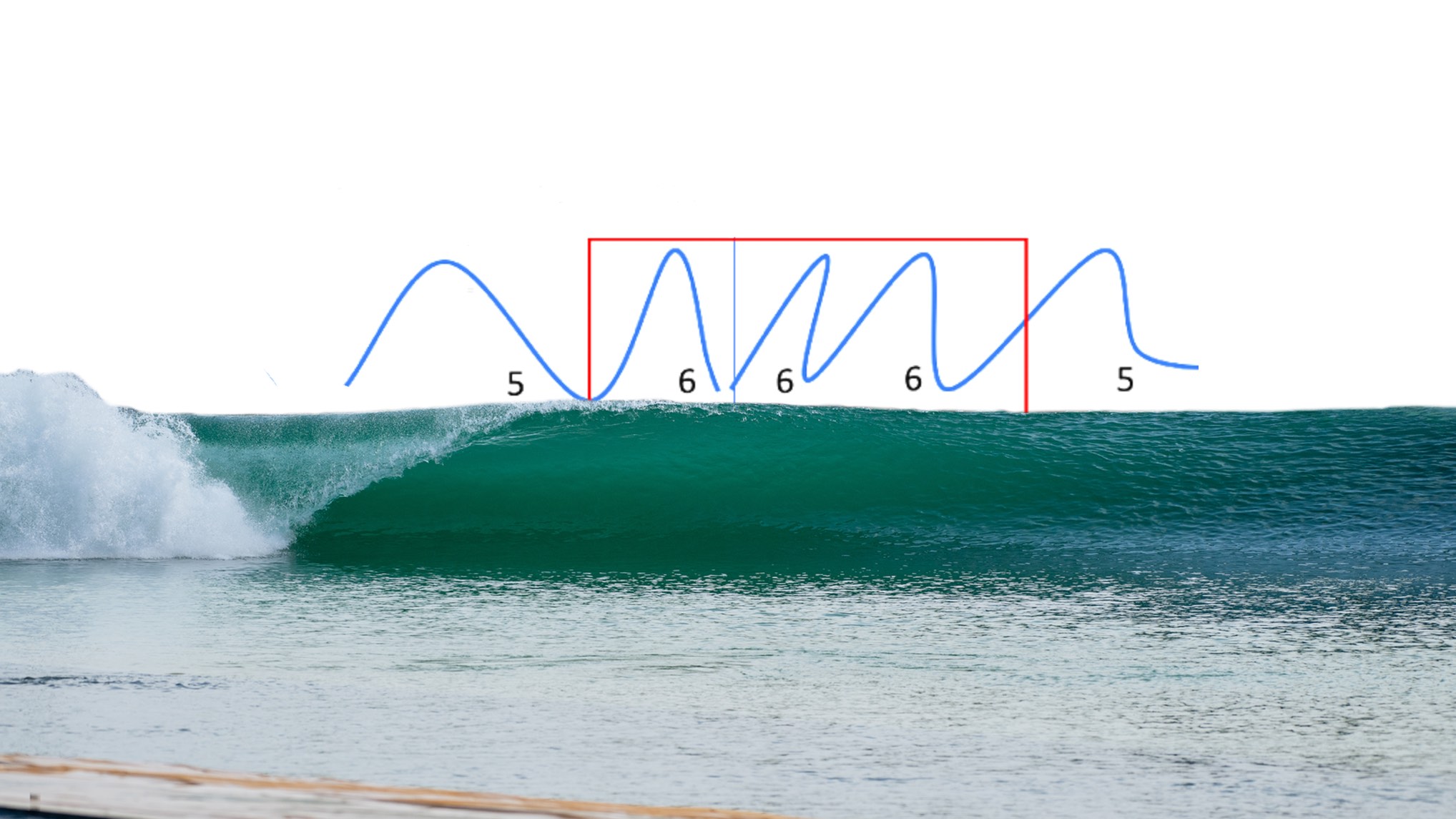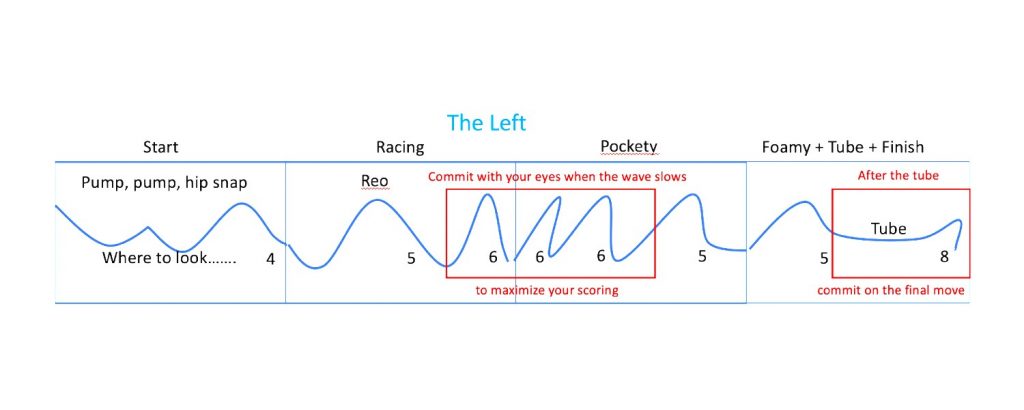Decoding the 4 sections of the Surf Ranch

To most of us the reeling rights and lefts of the Surf Ranch just look like a perfect 45-second run. But to the competitors and their coaches, it’s a series of sections broken down to maximise scoring potential. Four to be exact. We got the lowdown from Aussie surfcoach Martin Dunn on how a section-by-section approach separates the wildcards from the Medinas.
I had the opportunity to help a rookie WCT surfer prepare for the 2021 Surf Ranch event, although having never actually been to the site. I was working with the surfer on their surfing here in Australia and at the end of one session they asked, “What should be my approach at the Surf Ranch?”
At first a daunting prospect to effectively advise from afar, but as I reviewed previous surfed waves at the Surf Ranch, it became obvious to me that there was a standardised pace and look to the wave, that would allow a pattern to be devised to fast-track the learning of how to surf the wave?
Both the right and left show similar characteristics, in regards to pace, manoeuvrability, and tube riding, but obviously in different combinations.
From my observations, and after two days of practise at the surf ranch undertaken by the surfer, I came up with a formula [or pattern] for both waves that would create solid scores if the surfer adhered to these patterns.
Ex-professional surfer and surfcoach Ian Cairns made the comment on this concept: “Each wave needs to be broken into sections and a repertoire developed for each, tied together seamlessly. That’s choreography. The art is in how creative each section is. That’s why Medina is so good. It’s a game plan.”
To illustrate this concept and to provide better clarity for the surfer, I broke the left into 4 identifiable sections:
1. Starting section,
2. “Racing “section
3. “Pockety” section
4. the tube section at the end.
Each section needed to be attacked differently in terms of the type and intensity of maneuvers performed, so that a surfer’s pace down the line was not compromised. This pattern could then be repeated and honed to create consistency and self-belief so that the surfer could maximize their performance on competition day.

The diagram above was provided to the surfer to provide a visual reminder of the 4 sections, the type of manoeuvres that could be performed, and the intensity of those manoeuvres as the surfer surfed down the line.
Related Coverage
